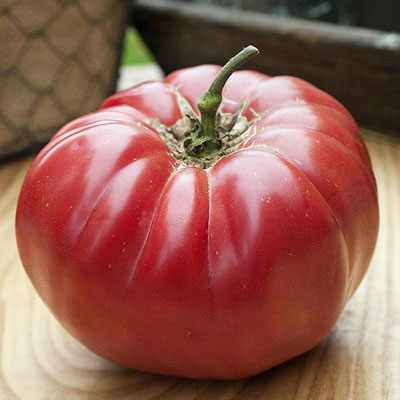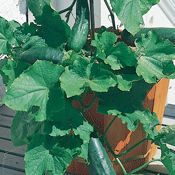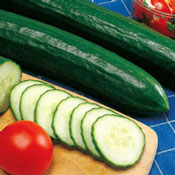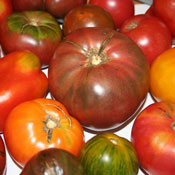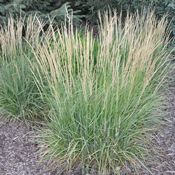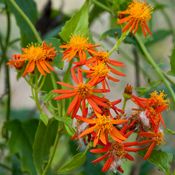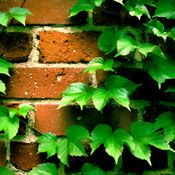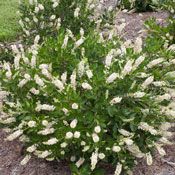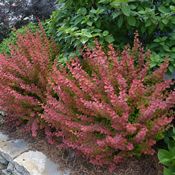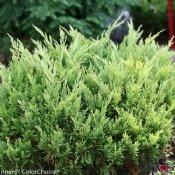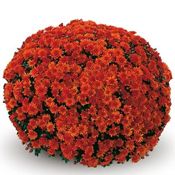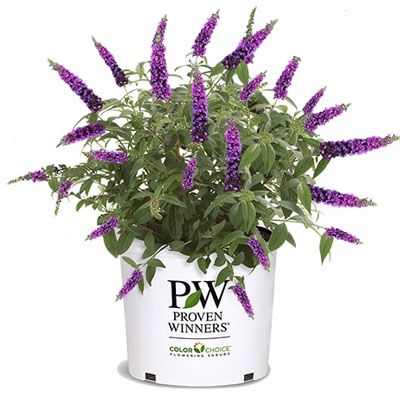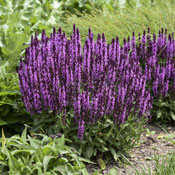Most gardeners think of Agricultural Lime as an amendment to make acidic soil more alkaline, or ‘sweeter’. This is absolutely true; however, pulverized, crushed, or pelletized limestone is also very beneficial for clay soil, even when acidity is not a problem. In fact, most clay soil is alkaline, but lime can be used to improve its structure and make it more fertile, while improving its drainage and overall health. This all takes place because of a process called flocculation. To understand flocculation, think of a flock of sheep grazing nose-to-tail, tightly grouped in the middle of a pasture, when suddenly a thunderclap causes them to scatter in all directions. What had been a virtually impassable flock of grazing sheep is now an open and unobstructed field you can drive straight through because the sheep are now evenly dispersed across the entire pasture.
When you add lime to your soil, a chemical reaction takes place between the calcium carbonate (CaCO3), the main ingredient in processed limestone, and the miniscule grains of clay. When you evenly distribute Agricultural Lime throughout your soil, the fine, yet clumped-up, clay particles scatter, binding to the larger calcium particles. The clay, which was clumped together and sticky, now has more space between each tiny grain of soil, allowing both air and water to pass through it more easily.
Some would say the advantage of this is better drainage and aeration, which is absolutely true; however, there’s something else happening that is much more basic, explaining why this chemical reaction is such a benefit to your soil. The looser, less compacted, soil creates improved conditions for beneficial bacteria to flourish.
Ken Ferrie, the editor of Farm Journal, explains that the good things you do for your soil are actually aimed at supporting microbial populations. For example, we tend to think we are applying fertilizer to feed your plants, but those nutrients must first be processed by microorganisms before being released to your plants. Ferrie summarizes it like this, “In fact, everything we do to improve soil health is really aimed at building and maintaining this diverse population of soil microorganisms.” In other words, increased microbial action causes the nutrients in the soil to break down and become bio-available, making it easy for your plants to absorb them. It’s as if the microbes cook the soil so that your plants are able to obtain nutritious meals from it. If the soil remains uncooked, your plants won’t digest it well and won’t be able to absorb the necessary nutrients contained in it.
When you amend your clay soil with lime, flocculation takes place, which causes the soil to be easier to cultivate and irrigate, as it steps up the action of the beneficial bacteria. Over time, this makes minerals and other nutrients more bio-available, the result being really strong plants and higher yields, as well as more fertile and healthy soil.
To Lime or Not to Lime
We wouldn’t want you to miss out on the benefits of amending your clay soil with lime just because your soil is slightly alkaline (with a pH of 7.2 to 7.5) Yet, if it is strongly alkaline (with a pH between 7.5 and 8.0), you may be better off with garden gypsum, which works similarly to Agricultural Lime, but contains some sulfur, making your soil more acidic. For highly alkaline soil(above pH level 8.0) you will want to apply sulfur directly. This will help acidify your soil and also protect it from a variety of pests, though it will not bring the added benefits of flocculation.
We recommend you start by testing the pH of your soil. Tests are very inexpensive these days; in fact, if you buy the Rapitest pH Soil Tester, which costs considerably less than a dollar per test. If your soil is acidic, neutral or slightly alkaline, we recommend you apply lime as an amendment to your soil. Late fall is actually the best time to apply Agricultural Limestone; by the time spring arrives, your soil will breathe better, use water more efficiently, drain properly, and will be inundated with those beneficial microorganisms.
How to Apply Lime
Applying lime is simple. Just cultivate (dig up and loosen) your soil, either by hand using a spade or broad fork, or for larger areas, by using a rototiller. Following the directions on the bag, spread the lime either by hand or with a broadcast spreader. Then use a rake, hoe, or broad fork to work the lime into the soil. If you use pelletized lime and are concerned that the pellets will not disperse as well as powdered lime, rest assured that once exposed to water, those pellets will dissolve completely, distributing the lime throughout your soil. Either apply the Agricultural Lime just before rain is expected, or water thoroughly to allow the lime to dissolve and mix with your soil.
Applying lime will not work overnight. It takes some time to do its work, as does any soil amendment, which is why we recommend application in the fall, rather than in the spring just before you plant.

















































































































